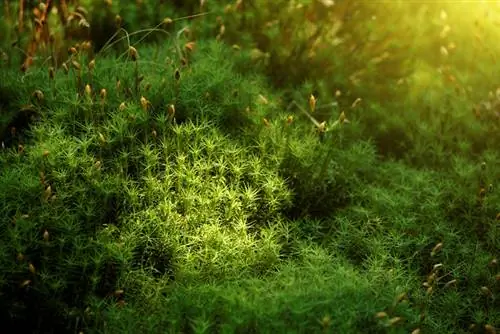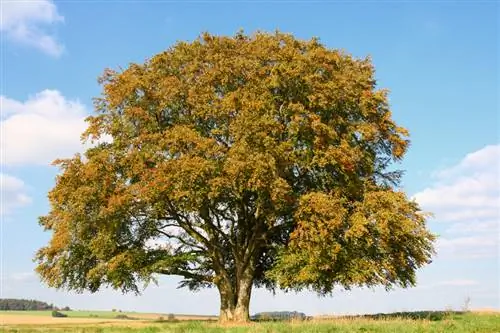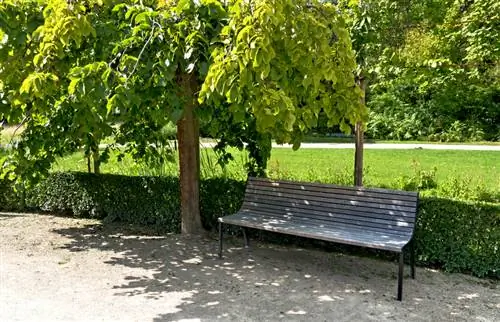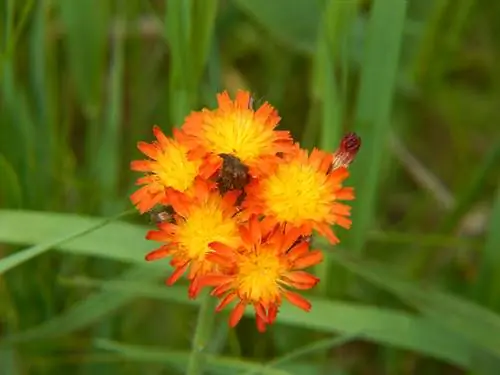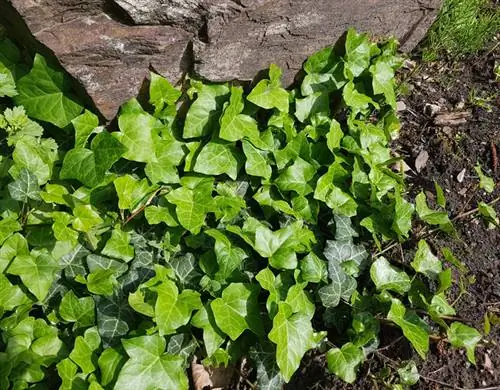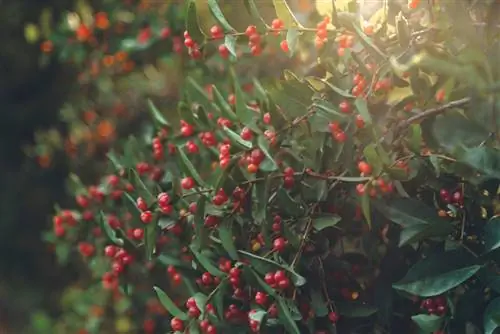- Author admin [email protected].
- Public 2023-12-16 16:46.
- Last modified 2025-01-23 11:20.
Masses are by far the most species-rich division within the huge family of moss plants. To give you an insight into the diverse spectrum with a dizzying 15,000 species, we have put together the following representative examples. These species of deciduous moss beautify your garden in beds and on stone.
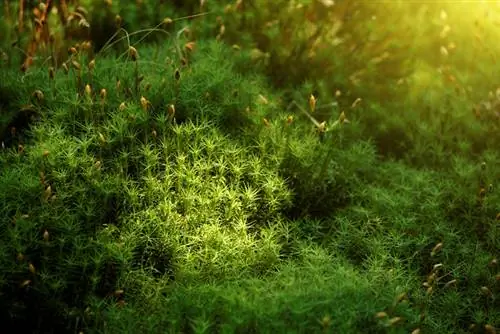
Which types of moss are suitable for the garden?
Some representative broadleaf moss species are: Golden maidenhair moss (Polytrichum commune), beautiful wider clay moss (Polytrichastrum formosum), felt cap moss (Pogonatum urnigerum), alpine wider clay moss (Polytrichastrum alpinum), swamp peat moss (Sphagnum palustre), fringed peat moss (Sphagnum fimbriatum) and Girgensohn's peat moss (Sphagnum girgensohnii). These species thrive in a variety of garden conditions and locations.
Women's hair mosses draw creative garden pictures
As one of the outstanding genera within the broadleaf mosses, the species of lady mosses keep what the name promises. The following examples can happily forego floral gimmicks in order to beautify your garden with velvety green cushions:
- Golden maidenhair moss (Polytrichum commune), the moss of the year 2010 with the delicate gold shimmer
- Beautiful Widertonmoss (Polytrichastrum formosum), which forms a dense moss lawn with densely leafy stems
- Felt cap moss (Pogonatum urnigerum) delights with red-brown boll caps when the spores ripen
Where a tall-growing deciduous moss needs to thrive on soils poor in nutrients and lime, the Alpine broadtone moss (Polytrichastrum alpinum) is reliably there. The leafy stems stretch up to 20 cm towards the sky, branching out strongly at the top and forming a dense cushion.
Peat mosses provide valuable services in the home garden
The peat mosses genus gives us more than 300 species. The following examples show in which areas of the hobby garden mosses act as problem solvers:
- Swamp peat moss (Sphagnum palustre) quickly greens permanently moist, boggy locations in your garden
- Fringed peat moss (Sphagnum fimbriatum) forms the popular swinging lawn with other types of peat moss in the bog bed
- Girgensohn's peat moss (Sphagnum girgensohnii) doesn't go weak even at a pH value of 3.0
Furthermore, orchid fans cannot do without sphagnum. The peat moss serves as part of the substrate or as a base for securely tying epiphytic orchid species to a branch. These types of deciduous moss are also often used to pad a trendy hanging basket so that it can be easily planted.
Tip
Are you wondering how moss grows on stone? This is surprisingly easy to do with a shake made from moss, buttermilk and water. Place a large piece of moss in a bowl and add 2 cups each of buttermilk and water. Mix the whole thing until you get a creamy consistency. Apply this to the surface to be greened with a brush - done.

